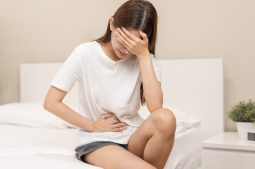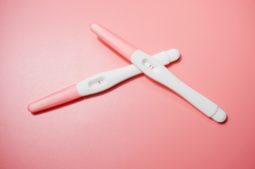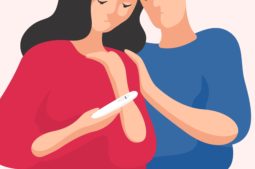
Here at IVI, we are a world-class fertility treatment clinic that excels in unrivalled customer care. We have over 70 clinics worldwide, offering a range of fertility treatments to help people have the babies they long for.
At IVI, our specialists are passionate about equipping you with the knowledge and answers you need to make a decision that is right for you, your partner and your future family. Read on to find out more about ovulation. The more you know about your body and how it works, the better.
What is Ovulation?
Ovulation is when a mature egg is released from the ovary and pushed down the fallopian tube. An egg will mature within the ovaries once a month and as it reaches maturity, is released by the ovary where it enters the fallopian tube to make its way towards the womb.
During this time, the lining of the uterus thickens to prepare to house the fertilised egg. If conception does not occur, the uterine lining is shed from the body and this process is known as menstruation (or a period).
Timing is Important
Whether you are thinking about trying for a baby, or actively trying, educating yourself and gaining a better understanding of how the body works can have a significant impact. Many people trying to get pregnant could improve their chances of success by understanding the ovulation process and tracking their cycle using ovulation predictor sticks to determine when they are ovulating.
There are numerous days within a menstrual cycle when a woman has a higher chance of getting pregnant; the days leading up to and including the day of ovulation. Knowing when these days are within the cycle can aid in pregnancy success.
Approaching Ovulation
As a woman approaches ovulation, her body produces increasing amounts of a hormone called oestrogen. This causes the lining of the uterus to thicken and prepare for pregnancy. These high oestrogen levels trigger a sudden increase in another hormone called luteinising hormone. The surge of luteinising hormone causes the release of the mature egg from the ovary – otherwise known as ovulation.
As ovulation is the release of an egg from an ovary it’s almost instantaneous – the follicle bursts and the egg is propelled quickly into the Fallopian tube. The egg can only be fertilised for up to 24 hours after ovulation. If it isn’t fertilised, the lining of the womb is shed (the egg is lost with it) and a period begins.
Follicular Phase
The follicular phase is the first part of the ovulation cycle and begins on the first day of menstruation. During the follicular phase, the pituitary gland releases a hormone called follicle stimulating hormone which stimulates the follicles in your ovaries to mature. Follicles are fluid sacks that contain the eggs.
Usually, only one follicle will mature into an egg, while the others will die. The growth of the follicles stimulate the lining of the uterus, which starts to thicken in preparation for possible pregnancy. During this stage, oestrogen levels start to rise. This will bring with it a boost of energy, often improving mood and brain function.
Testosterone stimulates the libido while oestrogen can increase positive effects on the brain and suppress appetite. This is a time when the woman may feel an increased sense of independence.
Ovulation Phase
Ovulation is the culmination of the menstrual cycle and everything the body has been working towards. An egg is released from its follicle into the ovary and will survive for 12-24 hours. Oestrogen and testosterone will rise to peak levels, boosting the effects of the follicular phase.
Ovulation is triggered by high levels of luteinising hormone. This hormone stimulates the follicles for the release of the egg. The eggs are funnelled into the fallopian tube and towards the uterus by waves of small, hair-like projections. The life span of the typical egg is around 24 hours.
Luteal Phase
The second half of the cycle is called the Luteal Phase and starts on the day of ovulation until the next period begins. The first 2-3 days of this phase will feel a lot like the ovulatory stage. That changes when oestrogen and testosterone decline and the body starts producing progesterone.
This stage can cause pre-menstrual symptoms such as food cravings, bloating, headaches, anxiety and moodiness.
When is a Woman Most Fertile?
While an egg only survives for up to 24 hours, sperm can remain active for up to seven days. It may therefore be surprising to learn that a couple can conceive through sexual intercourse up to a week before the egg is released. The ‘fertile days’ are all the days during the menstrual cycle when the woman has the ability to become pregnant via unprotected sex.
The days during each cycle when the woman is most fertile, and therefore most likely to get pregnant from unprotected sex, is a day or two either side of ovulation.
Possible Ovulation Complications
Even though it may be unusual, it is possible that complications can occur with ovulation. Some women, for example, have thyroid problems and other conditions that can make the ovaries less likely to produce an egg.
Physical problems with the uterus and uterine fibroids or blocked fallopian tubes due to pelvic inflammatory disease can be other causes of infertility, as can anovulation disorders.
Anovulation Disorder
When a woman is trying to conceive, it is normal for her to pay closer attention to her cycle. Anovulation is the absence of ovulation when it would be normally expected. It is common to assume that your period is a sign that your ovulation is normal. However, this is not always the case.
In an ideal scenario, a woman’s reproductive system will ovulate every month. However, there can be situations that cause a lack of ovulation in a menstrual cycle, causing anovulation – a term used to describe the absence of a period in:
- Young women who haven’t started menstruating by the age of 15
- Women and girls who haven’t had a period for 90 days, even if they haven’t been menstruating for long.
Chronic anovulation can cause long-term problems, such as hyperandrogenism (excessive levels of male hormones) or osteopenia (a medical condition in which the protein and mineral content of bone is reduced). Anovulation is also a symptom of polycystic ovary syndrome, a syndrome where cysts grow on the ovaries making it difficult for women to conceive naturally.
If you think you have symptoms of anovulation, or you would like to get yourself checked, contact your GP for further advice.
Final Words
Understanding the ovulation process is key to knowing more about your body and, therefore, it could help you succeed in trying for a baby because you know when you are at your most fertile.
We hope you have found this article useful and that it has informed you on your ovulation cycle. For more information, if you have any questions or would like to arrange a consultation, please contact our friendly UK Patient Support Services team on 0800 52 00 161, or you can use our clinic contact forms.





Comments are closed here.